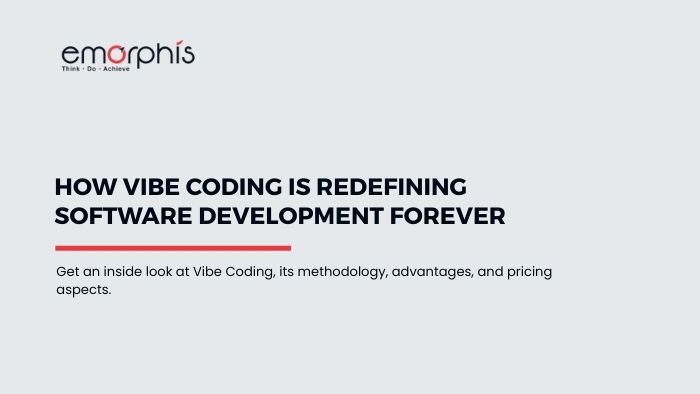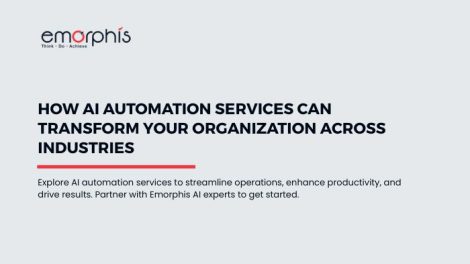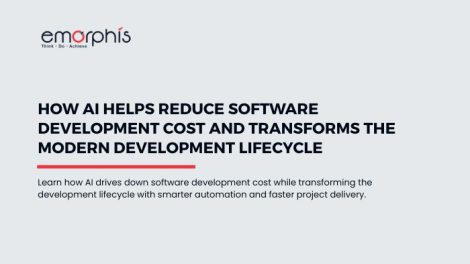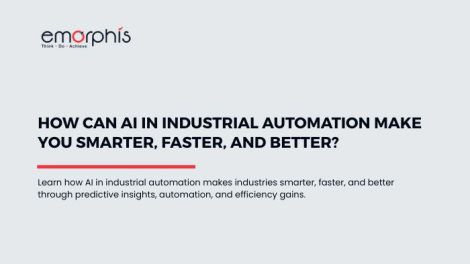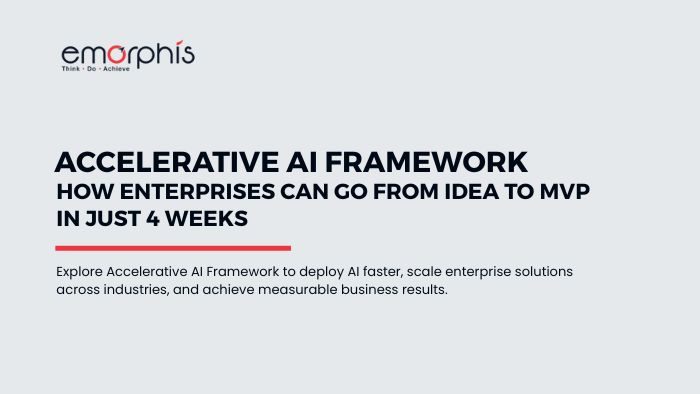Introduction to Vibe Coding
Vibe coding is emerging as one of the most talked-about trends in software development for 2025. At its core, vibe coding is the practice of creating software by describing what you want in natural language, letting artificial intelligence generate the code, and then refining it through conversation. Instead of spending hours typing out syntax, developers and non-developers alike can simply express their goals, and the AI will handle the heavy lifting.

View on X
The concept gained widespread attention when Andrej Karpathy, Director of AI at Tesla, founding team at OpenAI, described it as a way to “forget that the code even exists” and focus entirely on the outcome. This approach is gaining traction across the tech spectrum, from hobbyist coders building weekend projects to startups racing to release new MVPs, and even enterprises experimenting with AI-assisted prototyping.
Unlike traditional coding, where every detail must be manually written and debugged, vibe coding shifts the role of the human from “coder” to “collaborator.” It’s similar to pair programming, but instead of another human sitting beside you, your partner is a large language model trained on millions of examples of code.
As AI tools become more capable, vibe coding is positioning itself as a bridge between the no-code movement and professional software engineering, making it possible for more people to turn their ideas into functioning software faster than ever before.
The Core Idea Behind Vibe Coding
The main idea of vibe coding is simple: stop worrying about the lines of code and focus on the problem you want to solve. Instead of structuring functions, handling syntax errors, and organizing files from scratch, you focus on describing what you want the program to do. The AI then generates, runs, and refines the code based on your feedback.
There are generally two approaches to vibe coding:
-
Pure Vibe Coding
This is where you let the AI write and run the code with minimal intervention. You give high-level instructions, run the results, and adjust your prompts if the output doesn’t match expectations. It’s quick, fun, and perfect for side projects or exploratory coding, but not recommended for mission-critical applications without further review. -
Responsible Vibe Coding
In this method, the AI still generates most of the code, but you take an active role in reviewing, testing, and optimizing it. This approach balances speed with reliability, making it more suitable for projects that need to be maintainable, secure, and scalable.
By blending creativity, rapid iteration, and AI automation, vibe coding can dramatically reduce the time between idea and implementation. However, its success still depends on clear communication, structured thinking, and the willingness to iterate.
Vibe Coding Tools
Vibe coding requires more than just traditional programming knowledge — it demands an ecosystem of tools that blend AI-driven creativity with technical precision. The right set of tools ensures a smooth workflow, enables experimentation, and bridges the gap between human imagination and machine execution. These tools typically fall into several categories, each serving a unique purpose in the vibe coding process.
1. AI Development Environments
Platforms like GitHub Copilot, Replit, or Cursor offer AI-assisted coding environments where developers can write, test, and refine code in real-time. These environments support rapid prototyping, making it easy to iterate on ideas and test different “vibes” before committing to a direction.
2. Multimodal AI Frameworks
Vibe coding often involves generating and blending outputs across text, image, video, and audio. Frameworks such as OpenAI’s API, Hugging Face Transformers, and Stability AI’s SDKs provide the backbone for building rich, multimodal experiences. They allow developers to work with pre-trained models or train their own for more personalized outcomes.
3. Creative Content Generation Tools
Since vibe coding thrives on creating immersive digital experiences, tools like Runway ML, Midjourney, and DALL·E play a critical role in generating visuals, animations, and style references that align with the project’s desired mood or atmosphere.
4. Real-Time Interaction Platforms
For projects involving live interactivity, such as music-driven visuals or AI-driven performances, tools like TouchDesigner, Unity, and Unreal Engine integrate vibe coding outputs into dynamic, interactive environments. These platforms allow seamless connection between AI-generated elements and user interactions.
5. Collaboration and Version Control Systems
Since vibe coding often involves multi-disciplinary teams, platforms like GitHub, GitLab, and Notion are essential for managing source code, creative assets, and workflow documentation. They keep everyone aligned while enabling iterative creativity.
6. Deployment and Scaling Tools
Once a vibe-coded experience is ready, it needs to be deployed to the right medium, whether that’s a web app, mobile experience, or an immersive installation. Cloud AI services like AWS AI, Azure AI, and Google Cloud AI make it possible to scale the project for larger audiences without compromising performance.
In essence, vibe coding tools are the creative arsenal of developers and artists who want to go beyond traditional code. They transform an idea into a living, evolving digital experience by combining AI power, design sensibility, and technical execution.
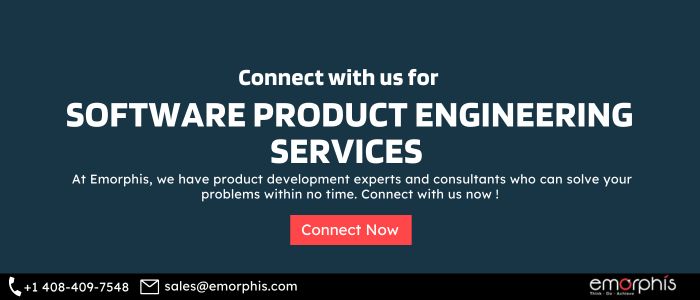
Companies Building Vibe Coding Tools
Here’s an overview of notable companies and platforms at the forefront of the vibe coding revolution, each offering unique capabilities to help you turn natural language prompts into working software:
Anysphere (Cursor)
Anysphere develops Cursor, an AI-native integrated development environment (IDE) that facilitates code writing, editing, debugging, and refactoring through natural-language interfaces. The company reached over $500 million in ARR and a $9.9 billion valuation by mid-2025.
Replit
Replit has integrated AI into its browser-based IDE, enabling rapid app prototyping through natural-language prompts.
Vibecode
A startup focusing on mobile-first vibe coding, Vibecode allows users to build iOS apps using natural language prompts. Backed by $9.4M in seed funding, it’s already been used to create over 40,000 apps.
Base44 (acquired by Wix)
Base44 offers a no-code, vibe-coding platform for building web and mobile apps through conversational prompts. Acquired by Wix for $80 million in mid-2025, it supports rapid, accessible app creation.
Anthropic (Claude Code)
With Claude Code, Anthropic offers an AI coding assistant that can read code, edit files, run tests, and perform command-line operations, all through conversational prompts.
Bolt (bolt.diy)
Bolt, or bolt. diy, is an open-source platform that enables building full-stack web apps using multiple LLMs (from OpenAI, Anthropic, Gemini, etc.). Designed for flexibility and transparency, it integrates with tools like Vercel AI SDK.
Additional Noteworthy Tools
Here’s a curated selection of other prominent tools transforming the vibe coding space:
- GitHub Copilot – Now features an “Agent Mode” for executing full coding tasks via prompts.
- Cursor’s “Agent Mode” – Embedded within the Cursor IDE, offering multi-agent project generation using GPT-4o and Claude 3.
- Cascade by Windsurf – AI code agent for collaboration and autonomous code generation; reportedly being acquired by OpenAI.
- Junie (JetBrains) – AI plugin for smart debugging and prompt-driven interactions within JetBrains IDEs.
- Augment Code – Chat-based coding tooling that can autonomously plan, build, and open PRs in any editor.
- Zed Editor – A next-gen collaborative code editor built for seamless human-AI interaction.
- Cody by Sourcegraph – Built for understanding and refactoring large codebases using AI.
- Tabnine – Offers on-device, context-aware AI autocompletion with a strong focus on developer privacy.
- Lovable and Bolt – No-code/vibe-coding platforms for product designers and startups, offering chat-based development workflows.
- Rosebud AI – Merges design and coding, allowing simultaneous generation of visuals and code through prompts.
- Glide – Converts spreadsheets into functional apps via no-code, low-language prompting.
- Zencoder, Tabnine, Pulse Labs – Emerging tools focused on code completion, enterprise-ready AI coding, and deep architectural understanding.
Benefits of Vibe Coding
Vibe coding is gaining traction because it combines the accessibility of conversational AI with the flexibility and control of traditional programming. By allowing you to focus on describing what you want instead of how to code it, it delivers multiple benefits:
A. Rapid Prototyping and MVP Development
Traditional coding requires setting up environments, installing dependencies, and writing repetitive boilerplate code before you even start building the actual features. Vibe coding cuts this preparation time drastically. You can go from an idea scribbled in your notebook to a working prototype within hours. This is especially valuable for:
- Hackathon teams that need to demonstrate a concept quickly
- Startups test a product-market fit before committing to large development costs
- Innovators who want to validate ideas with stakeholders early
B. Lower Barrier to Entry for Non-Programmers
Not everyone knows how to code, but almost everyone knows how to explain an idea. Vibe coding allows entrepreneurs, product managers, marketers, and domain experts to create functional software by expressing their needs in plain language. For example, a fitness coach with no coding experience could prompt an AI tool to create a mobile workout tracker with logging and progress analytics.
C. Increased Productivity for Professional Developers
Even experienced developers spend a significant amount of time writing repetitive structures like API integrations, CRUD operations, or unit tests. Vibe coding can automate these tasks so developers can focus on:
- Designing better architecture
- Solving core business logic problems
-
Optimizing performance and security
This results in faster delivery timelines and more time for innovation.
D. Cost Efficiency for Early-Stage Startups
Hiring a development team can be costly, especially in the early stages. With vibe coding, one or two team members can accomplish what might otherwise require multiple developers. This reduces payroll expenses, allows more budget for marketing or user acquisition, and shortens the time to market.
E. Creative Freedom and Experimentation
When you don’t have to think about syntax or frameworks, you can spend more time brainstorming features, testing unusual ideas, or refining the user experience. The AI handles the code-writing, letting you explore more possibilities in less time.
Limitations and Challenges
While vibe coding is powerful, it’s not a universal replacement for traditional development. There are some real limitations you should consider before relying on it exclusively.
a. Code Reliability and Quality
AI-generated code can be inconsistent. It might work for simple scenarios but fail in complex cases, especially when handling edge conditions. Without a thorough review, you could ship buggy or incomplete software.
b. Lack of Deep Understanding
If you don’t know how the code works, you may struggle to maintain or update it in the future. This is particularly risky if the original AI platform changes its output style or deprecates certain libraries.
c. Scalability Constraints
Vibe coding works best for smaller, self-contained apps or prototypes. When building large, multi-module enterprise systems with millions of users, you still need robust architectural planning and a structured development approach.
d. Security Vulnerabilities
Without manual review, AI-generated code can accidentally introduce flaws such as:
- Poor authentication and authorization handling
- Insecure API endpoints
-
Data leaks or improper encryption
This is a major concern for regulated industries like healthcare, finance, or government.
e. Dependency on the AI Platform
Your workflow will depend on the tool you choose. If the service has downtime, changes its pricing, or shuts down, you may be forced to adapt quickly, something that’s harder if you don’t fully understand the underlying code.
How to Use Vibe Coding – A Step-by-Step Guide
Vibe coding may seem like simply “talking to an AI,” but the results you get depend heavily on how you interact with the tool. The following expanded guide walks you through the process in detail, from idea to deployment.
Step 1: Define Your Goal Clearly
Think of the AI as a skilled assistant who knows many programming languages, but can only act on the instructions you give it. Vague instructions lead to vague results. The more context, requirements, and constraints you include, the closer the output will match your vision.
Best Practices for Defining Your Goal:
- Specify the purpose: Is it a marketing website, a data visualization dashboard, a mobile app, or an automation script?
- Describe the audience: Who will use it and in what environment?
- Include functional requirements: List must-have features, like login, search, payment gateway, or reporting.
- Set constraints: If you want a specific framework, coding style, or library, mention it.
- Define success criteria: How will you know the output is correct?
Example Prompt:
“Build a responsive three-page restaurant website with a homepage, menu page, and booking page. Use Tailwind CSS for styling. Include a booking form that sends an email confirmation via SMTP. Add smooth scrolling and a dark mode toggle.”
This level of specificity gives the AI enough direction to produce a strong starting point.
Step 2: Choose the Right Development Environment
Your development environment plays a massive role in keeping your focus and creativity intact during a vibe coding session. The right setup not only boosts productivity but also reduces friction when switching between tasks.
- Pick a code editor or IDE that feels intuitive and matches your workflow. Popular choices include Visual Studio Code for its extensibility, JetBrains IDEs for advanced language support, or Sublime Text for a minimal, fast experience.
- Customize your theme to match your mood. Many developers prefer dark themes for a relaxed, cinema-like feel, while others use pastel or light themes for a fresher vibe.
- Install productivity extensions that remove distractions and speed up your workflow, like GitLens for version control insights, Prettier for automatic code formatting, and AI-assisted tools for quick problem-solving.
- Organize your workspace with clean folder structures, pinned files, and a decluttered desktop so you’re not wasting time hunting for assets or references.
A well-tuned environment sets the tone for your entire session, helping you slip into “flow state” faster.
Step 3: Select Your Vibe Elements (Music, Ambience, Lighting)
The “vibe” in vibe coding comes largely from your sensory environment. This is where you create the mood that makes coding not just productive, but enjoyable.
- Music: Choose a playlist that matches your desired energy level. Lo-fi beats, synthwave, and instrumental jazz are favorites for focus. Avoid tracks with distracting lyrics unless they help you zone in.
- Ambient Sounds: Tools like Noisli, myNoise, or Coffitivity can simulate rain, forest sounds, or coffee shop chatter, perfect for blocking out real-world distractions.
- Lighting: Soft, warm lighting often feels cozy, while RGB setups can be matched to your playlist’s vibe. Some coders even sync lights with music for an immersive experience.
- Scent: If you want to go full sensory, consider aromatherapy, a lavender diffuser for calm focus, or peppermint for alertness.
The right combination of sound, sight, and atmosphere transforms coding from a task into a ritual you look forward to.
Step 4: Set Your Goals for the Session
Without a plan, vibe coding can drift into unproductive territory. Setting clear goals keeps the flow enjoyable but also result-driven.
- Define your main objective – Is this a bug-fix session, a feature development sprint, or a pure learning exploration?
- Break it down into micro-goals – These are small, manageable tasks that give you regular wins throughout the session.
- Use a time-blocking approach – For example, code for 45 minutes, then take a 5-minute break to stretch or reset your playlist.
- Track your progress – Whether you prefer Trello boards, Notion checklists, or simple sticky notes, having visual proof of progress boosts motivation.
Goals give your vibe session purpose, ensuring that when you wrap up, you’ve not only enjoyed the process but also achieved something tangible.
Step 5: Start Coding with Flow Techniques
Vibe coding is all about working in a mental “flow state,” where time feels irrelevant and ideas come naturally. Achieving this requires some intentional techniques.
- Eliminate distractions – Silence notifications, close unused tabs, and keep only relevant tools open.
- Use the Pomodoro method or deep work blocks to maintain sustained concentration.
- Let the music guide you – Adjust playlist tempo to your task type; slow for problem-solving, upbeat for repetitive coding tasks.
- Code for clarity first – Don’t obsess over perfection in the early stages; focus on getting the logic down and refining later.
- Experiment and play – Vibe coding thrives on exploration. Try out that new library or creative code pattern you’ve been curious about.
This is where the “fun” meets the “functional”, you’re not just typing code, you’re crafting solutions in a mental groove.
Step 6: Wrap Up and Reflect
The end of a vibe coding session is just as important as the beginning. It’s the moment to acknowledge your progress and set yourself up for the next session.
- Commit your code – Push to GitHub, GitLab, or your repository of choice, ensuring all changes are properly documented.
- Review your session goals – Did you hit all your targets? If not, note what carried over to the next session.
- Document key learnings – This could be a short note in Notion, a dev journal, or comments within your code.
- Tidy your workspace – Close unnecessary tabs, reset your IDE layout, and clear physical clutter so you start fresh next time.
- Reward yourself – Even if it’s just a great coffee, a short walk, or an episode of your favorite show, rewarding your brain helps reinforce the habit.
Reflection turns vibe coding from a one-off mood boost into a sustainable, productive practice.
Once you understand the process of setting up and using Vibe Coding effectively, the next important consideration is finding the right technology partner to help you bring your ideas to life. While the concept and tools are important, the expertise of the team implementing your vision can make all the difference in the success of your project. This is where choosing an experienced and innovative development partner becomes critical.
Why Choose Emorphis for Vibe Coding Projects
When it comes to Vibe Coding, the environment, mindset, and workflow matter just as much as the technical skill set. At Emorphis, we understand that coding is not just about writing lines of code but about creating a productive and inspired atmosphere where innovation flows naturally. Choosing the right partner for a Vibe Coding project means selecting a team that can balance creativity with technical excellence, and this is exactly where Emorphis stands out.
1. Deep Understanding of Vibe Coding Principles
Our team is well-versed in the philosophy behind Vibe Coding. We know how to blend focus with comfort, energy with discipline, and creativity with structure. This means we can design workflows that align with your project requirements while ensuring your team experiences an enjoyable and highly productive development process.
2. Customized Setup for Every Project
We do not believe in a one-size-fits-all approach. For each Vibe Coding engagement, we tailor the work environment, collaboration tools, and communication channels to suit the unique needs of the client and their team. Whether you need a music-enhanced workspace, creative brainstorming sessions, or real-time collaborative coding sprints, we create the conditions for maximum efficiency and enjoyment.
3. Blending Creativity with Technical Precision
Vibe Coding thrives on creativity, but we also know that code must be precise, secure, and scalable. Our developers strike a perfect balance between imaginative problem-solving and strict adherence to coding best practices. This results in innovative yet reliable solutions that meet industry standards.
4. Flexible Engagement Models
At Emorphis, flexibility is key. Whether you need a short-term Vibe Coding sprint to solve a specific challenge or a long-term partnership for continuous innovation, we offer engagement models that fit your budget and timeline. Our adaptability ensures that you get exactly what you need without unnecessary overhead.
5. A Culture of Collaboration
One of the strengths of Vibe Coding is the collaborative energy it fosters. Our culture at Emorphis is built around open communication, mutual respect, and knowledge sharing. This means your team will always feel supported and heard, and ideas can flow freely without barriers.
6. Proven Track Record Across Industries
We have successfully delivered projects across healthcare, fintech, retail, manufacturing, and other industries. This cross-domain expertise allows us to adapt Vibe Coding methodologies to different business contexts, ensuring that our approach adds value regardless of your sector.
7. Continuous Improvement and Feedback Loops
Vibe Coding is not static. We believe in continuous iteration and improvement. Through regular feedback sessions, performance reviews, and process adjustments, we ensure that the vibe remains productive and aligned with your goals throughout the engagement.
8. Commitment to Innovation
Our team thrives on exploring new tools, frameworks, and approaches that enhance the coding experience. By integrating the latest technologies with the principles of Vibe Coding, we help teams unlock higher levels of efficiency and creativity than they might have thought possible.
After understanding why Emorphis is a trusted partner for Vibe Coding projects, the next consideration for most businesses is the investment required. The cost of a Vibe Coding project can vary significantly based on the scope, complexity, and specific business goals. By having a transparent view of potential expenses, you can plan your budget effectively and maximize ROI.
Cost of Vibe Coding Projects
The cost of Vibe Coding projects varies based on several factors, including project scope, complexity, technology stack, team size, and timelines. A simple prototype or MVP may start at a few thousand dollars, while more sophisticated, multi-platform solutions with custom integrations, advanced UI/UX, and real-time data capabilities can range from tens to hundreds of thousands of dollars. At Emorphis, we provide transparent pricing, flexible engagement models, and scalable solutions to ensure clients get maximum value for their investment while meeting quality and performance standards.

Conclusion
Vibe Coding is emerging as a dynamic approach to software development, enabling faster innovation, richer user experiences, and more adaptable applications. By understanding its step-by-step process, organizations can harness its flexibility to build solutions that align with evolving market needs.
Partnering with a technology leader like Emorphis ensures not only expert execution but also strategic guidance, transparent cost structures, and future-ready solutions.
Whether it is creating an MVP or developing a complex enterprise application, Emorphis brings the right blend of technical expertise, creativity, and industry insight to make your Vibe Coding project a success.



